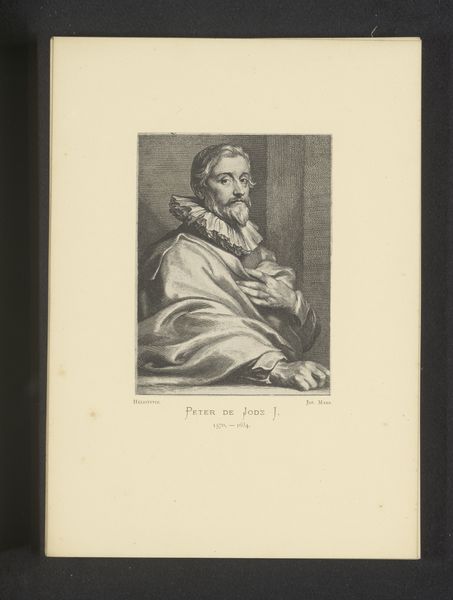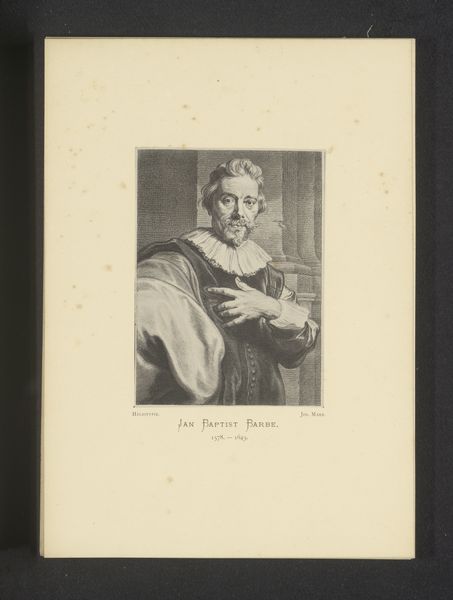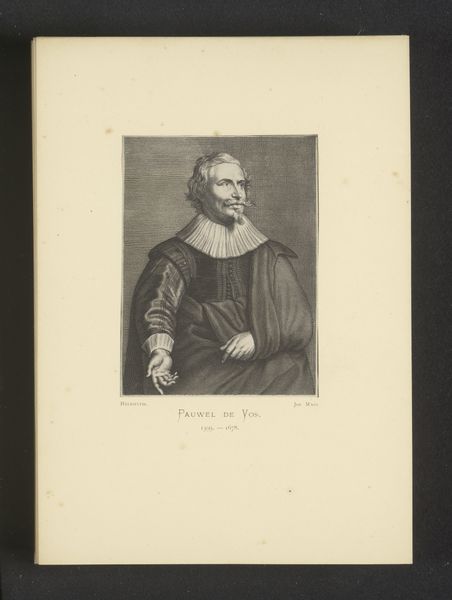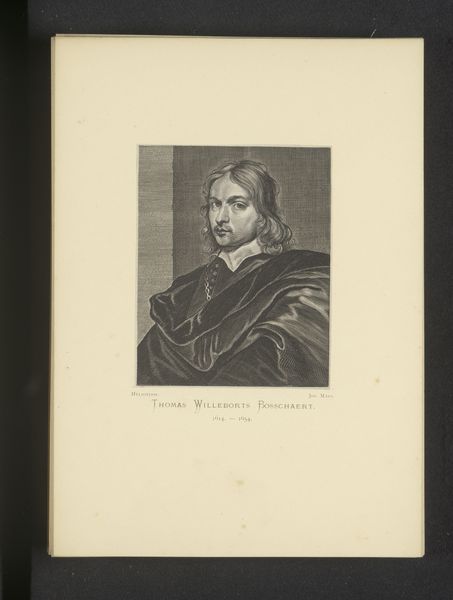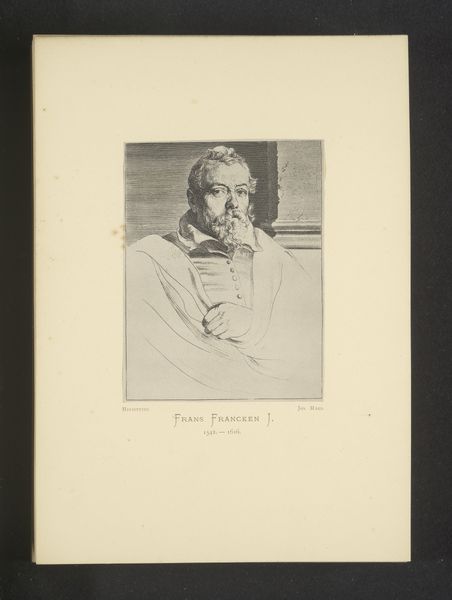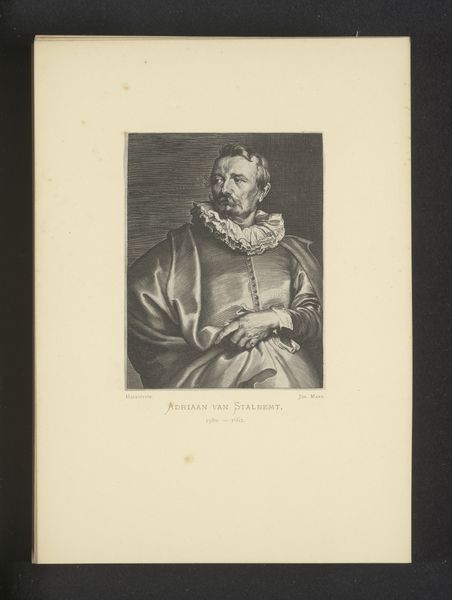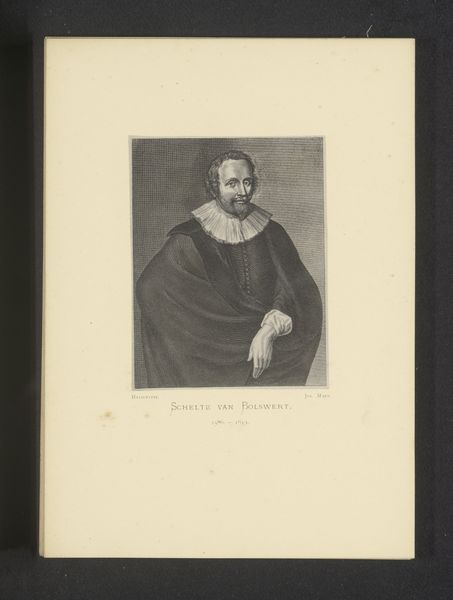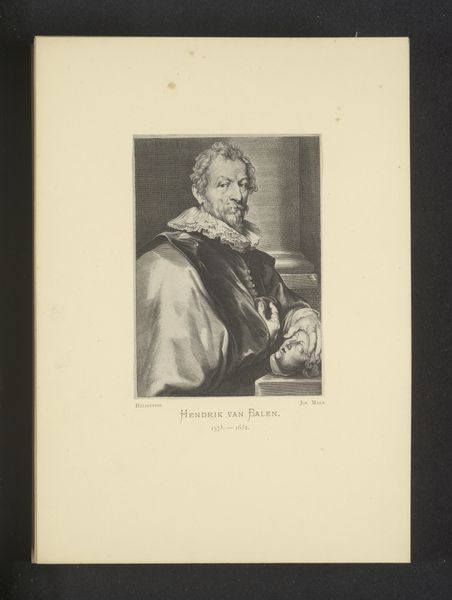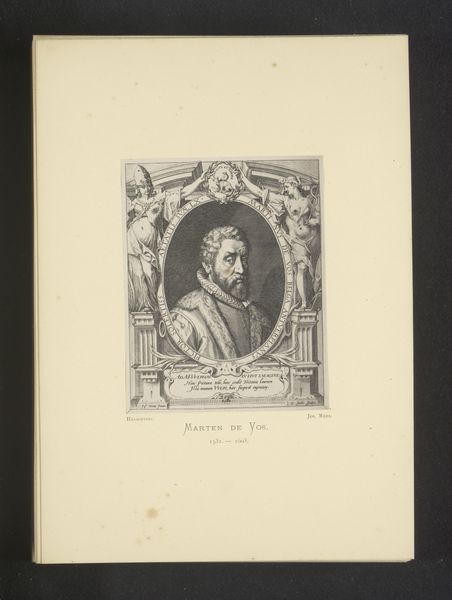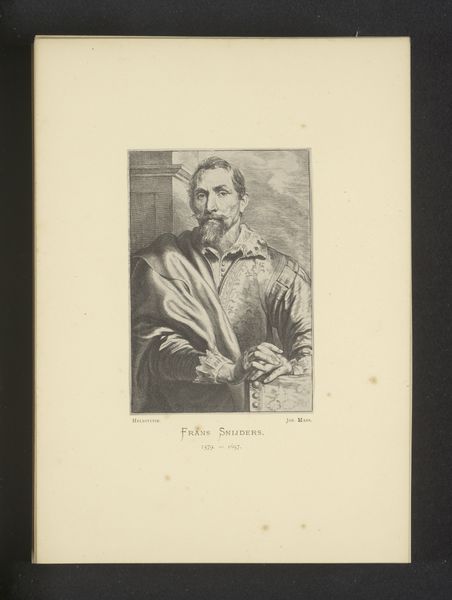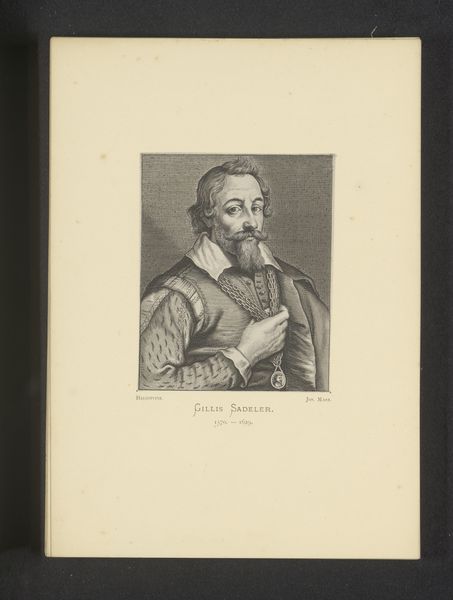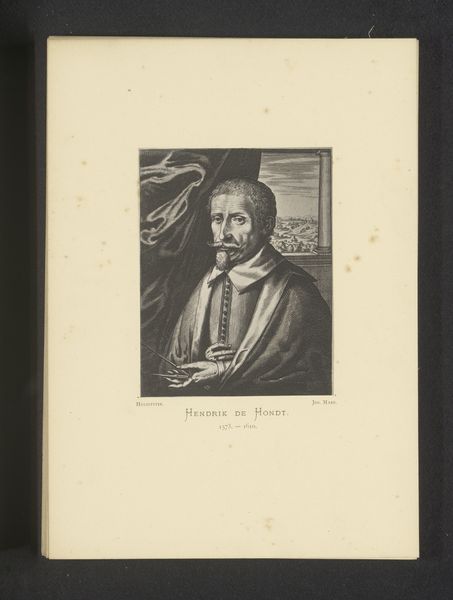
Reproductie van een gravure van een portret van Frans Francken (II) door Willem Hondius before 1877
0:00
0:00
Dimensions: height 120 mm, width 88 mm
Copyright: Rijks Museum: Open Domain
Editor: This is a reproduction of a portrait of Frans Francken II, engraved by Willem Hondius. It’s likely from before 1877, so quite some time after Francken’s life. It's a very formal portrait; what catches your eye? Curator: The ruff. That elaborate collar speaks volumes, doesn't it? It immediately positions Francken within a certain social sphere, hinting at status and wealth. Think about what the ruff conceals and reveals. Editor: Reveals? I just see it as restrictive, hiding the neck. Curator: Precisely! It restricts movement, dictating posture, communicating control. But think also about the expense and labor required to maintain that crisp white. What does whiteness represent in many cultures? Purity? Status? Editor: I guess it signals affluence and a certain adherence to societal norms. But it's a copy, so does that dilute the symbols? Curator: Not necessarily. Reproduction democratizes access to imagery, but also subtly alters its message. Consider, why reproduce Francken? What aspects of his identity were being highlighted or re-interpreted by making it into a print? His serious countenance seems meant to communicate intellect. Editor: I hadn’t considered the choice of *which* image to reproduce, only the act of reproduction itself. So it becomes a statement about the person *and* the values being assigned to them later. Curator: Exactly. It is a layered conversation. Each element echoes or reinterprets another element, forming a chain of cultural memory. Editor: That's a very interesting approach! I'll definitely keep that in mind when looking at similar pieces.
Comments
No comments
Be the first to comment and join the conversation on the ultimate creative platform.
